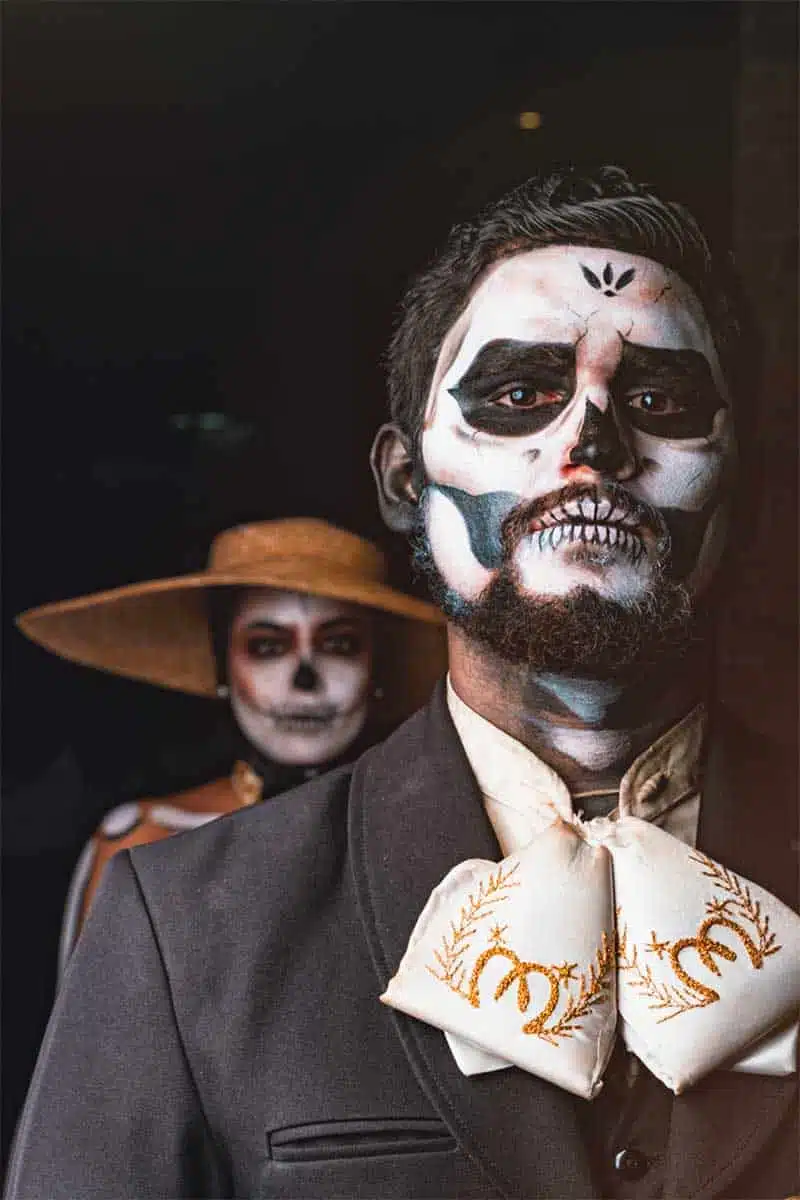
Death on the Move
(with its luggage)

Written By Mila Khyentse
Blog | Culture and tradition | Reflections on death
In this article, “Death on the Move (with its luggage), Mila Khyentse tells the story of a baggage-carrying zombie and a Master from Golok.
Death on the Move (with its luggage)
One day, thus I read: The crazy story of the lifeless corpse carrying luggage that could get lost if left unattended.
The story is set in the time of Shakya Shri [1], a great Dzogchen master of the late 19th and early 20th centuries. Shakya Shri had built a camp where over seven hundred Dzogchen practitioners lived. One day an old practitioner from the Golok area arrived at the camp alone. Everyone asked him why he was travelling alone and without luggage, and he replied that he wasn’t, that his servant was carrying his luggage, but that he was a bit slow and would therefore be a bit late. In fact, the servant finally comes into view, and everyone can attest to his peculiar, clumsy and erratic gait. The old golokpa then fetches his luggage, makes a loud “phèt” [2] and, to everyone’s amazement, his servant collapses lifeless on the floor. He then explains to all present that his servant is (was?) in fact his main sponsor, to whom he had promised on his deathbed to take his remains to a famous charnel ground in India. The assembly then realises that he is a “dead man walking”, influenced by the world of TV series and pop culture, so we’ll call him a “zombie”. In fact, the old practitioner (we realize he’s actually a very good practitioner!) and the servant have just stopped at Shakya Shri’s camp to ask for food and lodging (well, not for the servant). In fact, to everyone’s surprise, the old Golokpa did not ask for any teaching from the local master, Shakya Shri, who was renowned throughout Tibet. The Golokpa then specifically requested that no one touch the corpse, saying that anyone who touched it might also become a zombie! Fortunately, the superstitious Tibetans kept their distance.
Quote
Death walks a lot in the Tibetan world!

The next day, once again, a large crowd gathered around the old golokpa and his servant-sponsor zombie to witness their departure. No one was disappointed by the spectacle! With a “phèt” as thunderous as the day before, the servant rose, loaded the luggage and they set off again, the old man walking briskly and the poor zombie, who had lost all the skin on his feet, limping…
A year later, the old golokpa returned to Shakya Shri’s camp, saying he had fulfilled his mission and leaving his sponsor’s body in the Indian cemetery where he had asked to be taken. It hadn’t been easy, as not only was the zombie difficult to move, but he could also get lost if left unattended… Well, now it was up to him to carry his own luggage.
An incredible story, no doubt, like many from the Tibetan world. My master, Alags Chörten, also told me many similar stories (which will be the subject of future publications). Death walks a lot in the Tibetan world!
The question is not whether this story is true or not, but rather what it evokes in us… We are so used to associating life with this body that we are generally baffled by any oddity that doesn’t fit into our usual mental patterns, such as the zombies that come out of American TV series and walk around the world. These patterns lead us to see death as a “final end” associated with the disappearance or destruction of the body. They also lead us to believe that our way of thinking is universal and that, for example, the perception of death is the same everywhere and for everyone. Anything outside these schemas is either impossible, miraculous or just a load of rubbish.
We wish it were as simple as that!
However, Dzogchen emphasizes that death is just another transition, like sleep and awakening, and that a body is just one medium among many. To want to keep this body forever is an illusion, because for the Great Perfection the true finality lies in the ultimate cessation of this endless succession of births and deaths called ‘samsara’. This is true liberation for Dzogchen.
It is, of course, the fear of death that prevents us from facing it and seeing it for what it really is: a temporary illusion. For us, who generally deny the final moment of this existence, it’s reassuring to hope that there is something beyond, or to be told that there is a multitude of existences afterwards. But we don’t think, carried away by our fear, that if there is a succession of existences, there is just as much suffering in each of them. This can quickly be seen as the greatest curse when you think about it…
Therefore, in the Great Perfection tradition, one of the fundamental aims of practice is to put an end to the illusory cycle of all ends. However, this requires us to give up the old patterns that lead us to approach and think about reality in the same way over and over again.
Perhaps the problem has never been death, but rather the way in which we determine it, and the way in which we can never determine it. Aren’t we all a bit zombie-like in our lives?
And when you think about it, the problem isn’t that we’re dead, it’s that when we’re dead, we don’t know where to go without guidance! Which isn’t easy when you’re carrying luggage…
[1] Blazing Splendor: The Memoirs of Tulku Urgyen Rinpoche, Chapter 13, “Shakya Shri, the Lord of Siddhas”. Back
[2] “Phat” or “Phèt”, a sound syllable emitted to strengthen meditative concentration and to direct the inner winds to carry out this or that activity, such as animating the dead here. This is a typical Dzogchen technique. Back
